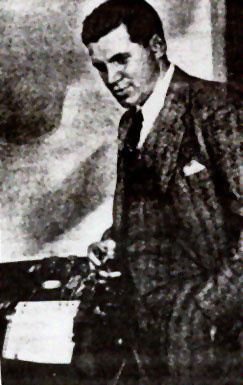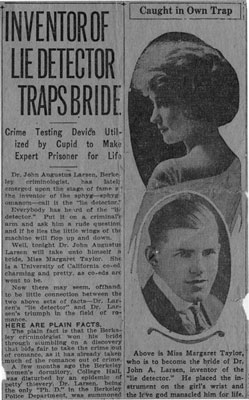Robert Oppenheimer is considered to be father of atomic bomb. He was born in a wealthy Jewish family, but had little Jewish upbringing. He was highly intelligent, and had mastered 7 languages in addition to English. He studied Sanskrit at Berkeley Univ. and thereafter he studied Bhagwad Gita in original Sanskrit. Bhagwad Gita became part of his life and he will live like Arjuna or Yudhisthra and will often quote Gita to justify his actions.
He wrote to his brother Frank that Gita is very easy and has profound knowledge. When Roosevelt died in 1945, he quoted from Gita. When first atomic test was done in July 1945, he quoted from Gita. Although he was very reluctant to give his okay to bomb Hiroshima and Nagasaki, he justified his action by citing Gita that, as a scientist, his duty is to do his research work, and leave upto politicians to decide what to do with atomic weapons. Later he criticised bombing of Nagasaki and Hiroshima saying that bombing was not necessary because Japan was already defeated.

 After reaching an altitude of 8,000 meters, the smoke ascended more slowly and took about 30 seconds to reach an altitude of 12,000 meters. Then, the mass of smoke gradually discolored and scattered in wads of white cloud
After reaching an altitude of 8,000 meters, the smoke ascended more slowly and took about 30 seconds to reach an altitude of 12,000 meters. Then, the mass of smoke gradually discolored and scattered in wads of white cloud
He wrote to his brother Frank that Gita is very easy and has profound knowledge. When Roosevelt died in 1945, he quoted from Gita. When first atomic test was done in July 1945, he quoted from Gita. Although he was very reluctant to give his okay to bomb Hiroshima and Nagasaki, he justified his action by citing Gita that, as a scientist, his duty is to do his research work, and leave upto politicians to decide what to do with atomic weapons. Later he criticised bombing of Nagasaki and Hiroshima saying that bombing was not necessary because Japan was already defeated.

OPPENHEIMER, J. ROBERT
(b. New York, N.Y., 22 April 1904; d. Princeton, New Jersey, 18 February 1967).
J. Robert Oppenheimer was the son of Julius Oppenheimer, who had immigrated as a young man from Germany.
As a boy Oppenheimer showed a wide curiosity and the ability to learn quickly. He went to the Ethical Culture School in New York, a school with high academic standards and liberal ideas. With all the breadth of his interests, Oppenheimer was quite clear that his own subject was physics.
Atomic Energy: Los Alamos . The change was the result of Oppenheimer’s involvement with atomic energy. After the discovery of fission he, like many others, had started thinking about the possibility of the practical release of nuclear energy. With his quick perception he was aware of the importance of fast neutrons for any possible bomb. In 1940 and 1941 the idea of releasing nuclear energy was beginning to be taken seriously. A number of groups in different universities were working on the feasibility of a nuclear reactor, and others on methods for separating uranium isotopes. The latter would ultimately lead to the production of the light isotope (U235) in nearly pure form, and this is capable of sustaining a chain reaction with last neutrons.
When the test of the first bomb at Alamogordo demonstrated the power of the new weapon, all spectators felt a terrified awe of the new power, mixed with pride and satisfaction at the success of their endeavors. Initially some were more conscious of the one emotion, some of the other. Oppenheimer, whose attitude to his own faults was as unmerciful as to those of others, if not more so, admitted later that he could not resist feeling satisfaction with the key part he had played in the work. Many accounts have quoted the verses from his Sanskrit studies of the Bhagavad-Gita which went through his mind at the time of the test, the first referring to the “radiance of a thousand suns” and the other saying, “I am become Death, the destroyer of worlds.” Besides the awareness of the technical achievement, Oppenheimer clearly did not lose sight of the seriousness of the implications.
None of this was public knowledge until 6 August 1945, when the first uranium bomb was dropped on Hiroshima. The implications of the decision to use the bomb to destroy a city will continue to occupy historians for a long time. Oppenheimer played some part in this decision: he was one of a panel of four scientists (the others being A. H. Compton, E. Fermi, and E. O. Lawrence) who were asked in May 1945 to discuss the case for the military use of the bomb on Japan. They were told that it would he impossible to cancel or delay the planned invasion of Japan, which was sure to be very costly in lives, unless Japan surrendered beforehand. Their opinion, which Oppenheimer supported, was that a demonstration on an uninhabited island would not he effective, and that the only way in which the atom bomb could be used to end the war was by actual use on a “military” target in a populated area. Today, in retrospect, many people, including many scientists, deplore this advice and the use of the bomb. Oppenheimer commented in 1962: “I believe there was very little deliberation ... The actual military plans at that time… were clearly much more terrible in every way and for everyone concerned than the use of the bomb. Nevertheless, my own feeling is that if the bombs were to he used there could have been more effective warning and much less wanton killing.…”11 lie remained for the rest of his life acutely conscious of the responsibility he bore for his part in developing the weapon and in the decision to use it.






